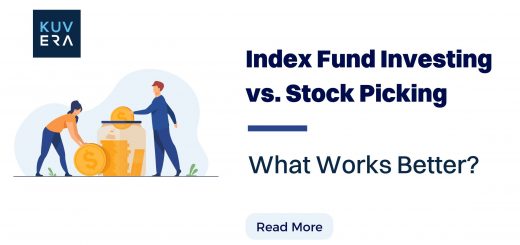What is an ETF Fund of Fund (FOF) Scheme?
It’s a Fund of Funds (FOF) strategy that makes ETF investments. With these funds, investors who lack a Demat account can gain exposure to inexpensive ETFs. For taxation purposes, Fund of Funds (FOF) that invest 95% in Equity ETFs are considered Equity Funds.
What is ETF?
An ETF, an exchange-traded fund, is a marketable investment that follows an index, a commodity, bonds, or a basket of assets like that of an index fund.
Exchange-traded funds are among the most significant and beneficial products developed for individual investors in recent years. ETFs have a lot to offer and, when utilised appropriately, are a great way for investors to reach their financial objectives.
An ETF is a collection of securities you can purchase or sell on a stock exchange through a brokerage company. Almost any asset class possible, including traditional investments and so-called alternative assets like commodities or currencies, is available as ETF in stock market. Innovative ETF structures also give investors access to leverage, market shorting, and tax-free short-term capital gains.
Benefits of ETF
- Simple to trade: Unlike other mutual funds, which only trade at the end of the day, you can buy and sell anytime.
- Transparency: Most ETFs must report their holdings on a daily basis.
- More tax efficient: ETFs tend to generate fewer capital gain dividends than actively managed mutual funds, making them more tax-efficient.
- Trading transactions: As they are traded similarly to stocks, investors can place different order types that aren’t permitted with mutual funds, such as limit orders and stop-loss orders.
What is FOF?
A fund of funds, also known as a mutual fund scheme, makes investments in other mutual fund schemes. Instead of directly investing in stocks or bonds, the fund management owns a portfolio of other mutual funds in this. A specific FoF may invest in a plan run by the same fund house as it is in or in a different fund house. The portfolio is structured to accommodate investors with various risk appetites and monetary objectives. By investing in a variety of fund categories, investors have the chance to gain from diversity. The FoF fund may be domestic or international.
Benefits of FOF
- Easy to Handle – There is only one folio and one NAV to track. The fewer finances that need to be managed are easier to manage as a result.
- Tax-Friendly – There won’t be a capital gains tax when your fund of funds is rebalanced to keep the specified debt-to-equity ratio.
- Services for Professional Fund Management – Before attempting individual investing, you can test out investing in professionally managed funds by investing in a portfolio of funds.
- Reliability of portfolio managers – You can be sure that a trustworthy individual with years of experience in managing your funds since Fund of Funds requires that the backgrounds of its managers be reviewed and validated.
ETF vs FOF
Differences between ETF and FOF are based on the following:
- Structure
ETFs, similar to mutual funds, are a portfolio of securities. They invest in stocks, bonds, and other instruments even though the bulk of them adhere to an index.
The FOF mutual fund is a group of mutual funds. They invest in other mutual funds based on their financial goals and risk tolerance.
- Liquidity
ETFs can be traded at any time of day on a stock exchange. In comparison to mutual funds, it is, therefore, more liquid. FoFs have far less liquidity because they cannot be traded like ETFs. The redemption sum does not arrive in the bank account for a longer period of time.
- Selling Price
ETFs are purchased and sold at market value (MPV), not net asset value (NAV), as they are exchanged on a stock exchange. The market price of an ETF is determined by supply and demand. FoFs are traded using the NAV determined at the conclusion of the trading day.
- Costs
ETFs are much less expensive. The expense ratio of most ETFs is often less than 0.5 per cent because they are passively managed and follow an index.
FoFs are actively managed funds. The cost of fund management then raises the expense ratio. Additionally, the mutual funds in which the FOF invests could charge fees that are transferred to the investor.
Watch the YouTube video above by ICICIPrudentialAMC to understand the significance of ETF, the types of ETF, how to buy ETFs, the advantages of ETF, and much more
Interested in how we think about the markets?
Read more: Zen And The Art Of Investing
Watch here: How to invest during a bear market?
Start investing through a platform that brings goal planning and investing to your fingertips. Visit kuvera.in to discover Direct Plans and Fixed Deposits and start investing today. #MutualFundSahiHai #KuveraSabseSahiHai











